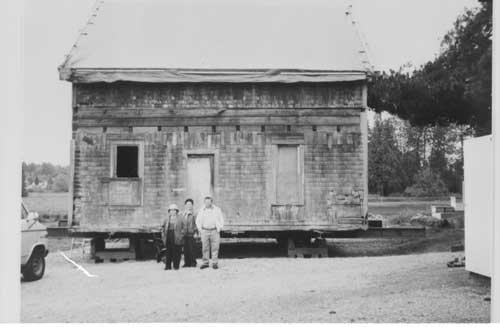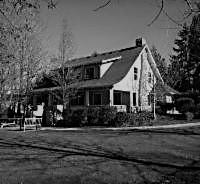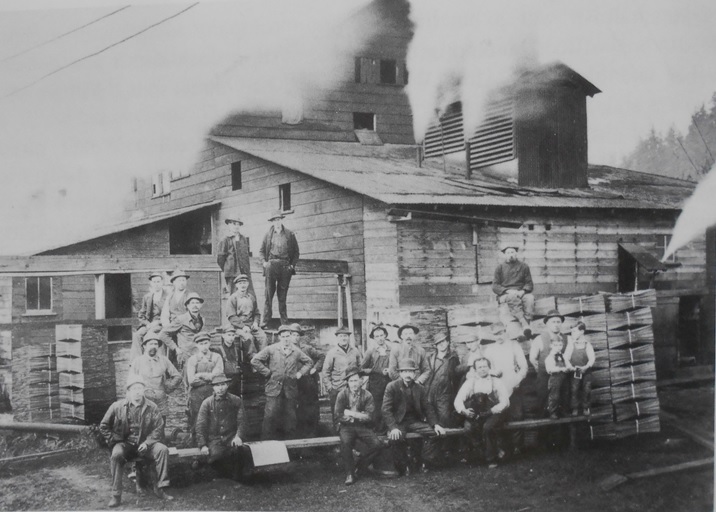The next of our five Bellevue cabins is located at the Larsen Lake Blueberry Farm off SE 8th and 148th SE. It was also relocated in 1990 from its original location near Phantom Lake and today serves as a trailhead and link to the Bellevue’s Lake to Lake trail system.
2002.135.01 - Possibly the Larsen Lake Blueberry Farm, circa 1930.
In March 1886, German immigrant, Henry Thode, purchased two tracts of land near Phantom Lake and built a house in 1894. It was a two-story nine room log house made with hand-hewn logs and shingled on the outside. Henry and his wife Emilia intended to farm, raise cattle and sell milk to the coal workers at Newcastle. However, Henry was declared insane later that year and committed to a mental institution.
He died two years later and Emilia remarried Jacob Kamber. They continued to live in the Phantom Lake House.
In 1932, Shigeo Masunaga and his wife, Taki, leased the Thode House and farmed ten acres. The family was forced to leave in April 1942 and were incarcerated at Pinedale, California. They did not return to Bellevue.
After the war, John Matsuoka leased the Phantom Lake land from Mondo Desimone who now owned the land. John farmed about 40 acres of the property growing fruit and vegetables. The Matsuoka’s lived in the house until 1966. The dwellings were abandoned after John and his family moved.
2013.050.001 - House being moved in 1989. Yeizo Masunaga, Yeizo's wife, and Mrs. Taki Masunaga at left.
In 1989, the Danieli family donated the site of the Thode Cabin to the city of Bellevue and moved it to Larsen Lake in 1990. Renovations were undertaken to preserve and highlight the original construction methods and integrity of the cabin. A foundation, flooring, stairway, roof, and porch were all replaced. The shingles were also removed showing the original log walls.
If you are walking around Larsen Lake and the Lake Hills Greenbelt, do stop and check out the “Thode House”. This is an easy cabin to visit even though the inside is not open to the public. A porch with a swing is located at the front of the house and a seasonal farm stand next door. At the cabin enjoy the swing and take a look at the hand-hewn logs (Fraser Cabin’s logs were machine hewed).
Resources:
“The Bellevue Story” Connie Squires, 1967
“Bellevue: It’s First 100 Year” Lucile McDonald, 1984
Asachi Tsuchima, 1952, “Pre-WWII History of Japanese Pioneers in the Clearing and Development of Land in Bellevue”












